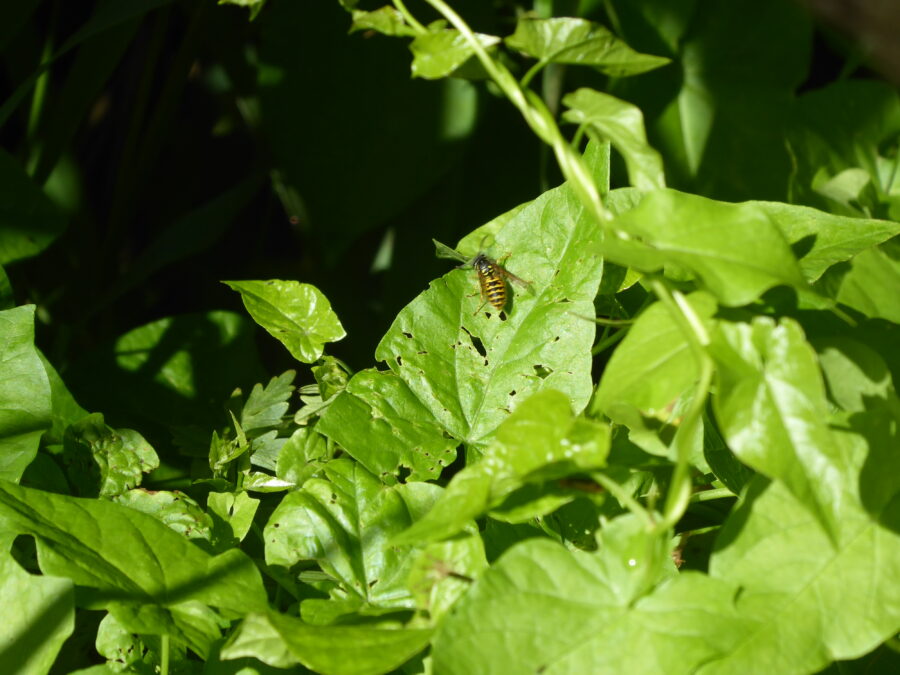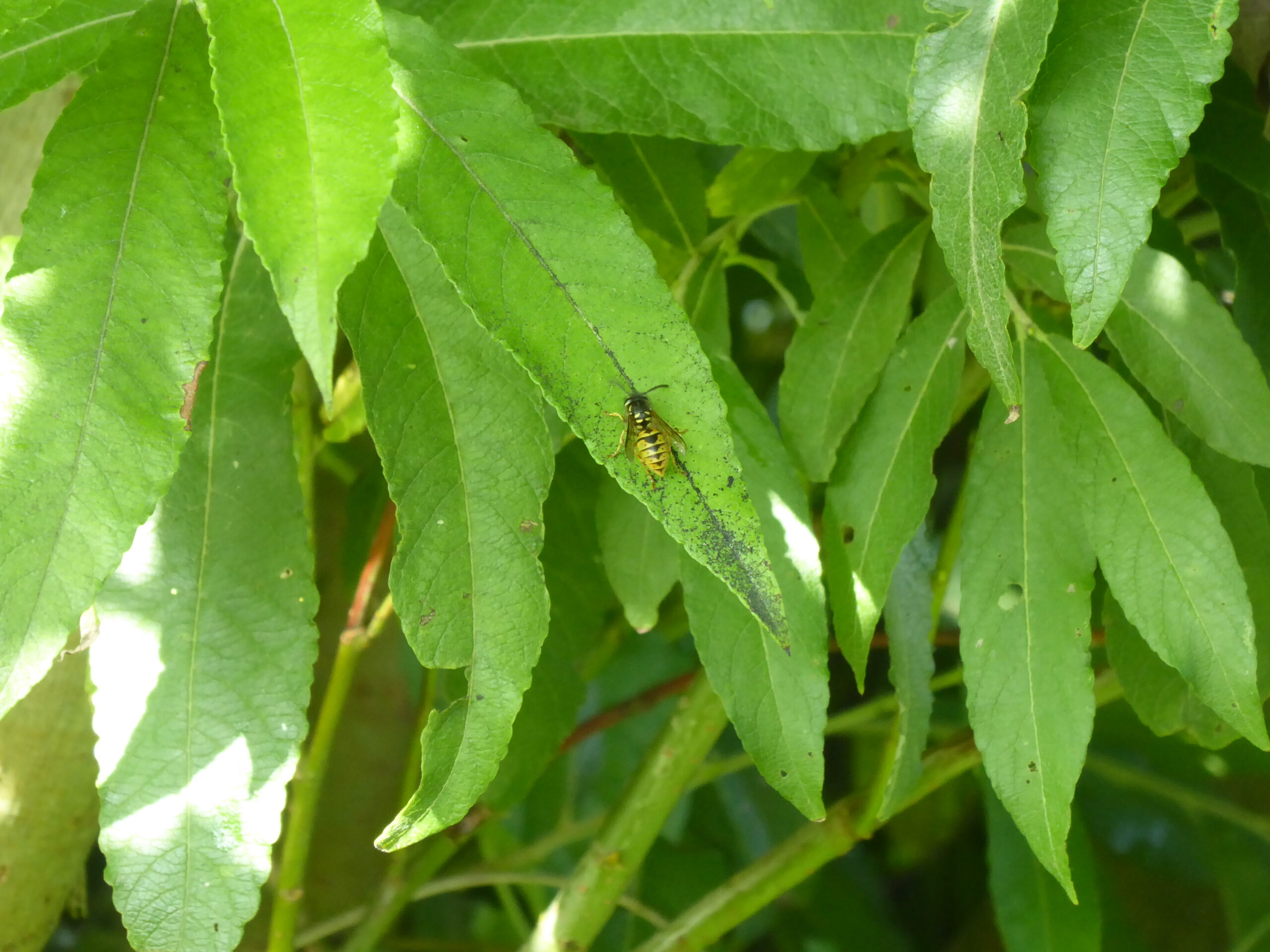There were wasps round our tall willow. Many wasps. We decided to leave them, as it is better to have them out here than in the eaves of the house. These wasps seemed happy in the environment of the Willow tree.
I took two photos of wasps and noted the different markings. I assumed they were both Common Wasps, just with individual markings. I knew they weren’t Hornets or types of solitary wasps because they had the regular wasp shape and colouring. However, the German Wasp, also common in the UK, has separate dots and thinner stripes on its back, so I think I’ve got one of each here. The German Wasp is above and the Common Wasp is below. The definitive way to identify them is to look at their faces. The German Wasp has three black dots on its face. However, I wasn’t going to get that close to find out!

I haven’t seen a wasp nest in the tree yet and the fact that the two different wasps in the environment indicates that they might have been just visiting. The Common Wasp is on a bindweed leaf near the willow, anyway. So what were they doing? Adult wasps eat only sweet foodstuffs like nectar and honeydew (and sweet picnic foods!). They live for so little time that they only need the carbohydrates to keep going, not proteins for bodybuilding. One source of honeydew is the trail that aphids leave behind them. So it is likely that both these wasps with their heads down to the surface of the leaves, were feeding on honeydew deposited by aphids. And why so many wasps had made their way to the willow tree on a hot, sunny day.
So, what is the point of wasps? Well, wasps prey on caterpillars, spiders and other insects, which they take back to feed to their young. In doing so, they keep the numbers down and balance the ecosystem. Also, in travelling from plant to plant they do their bit towards pollination. So, they do have their uses, after all.
